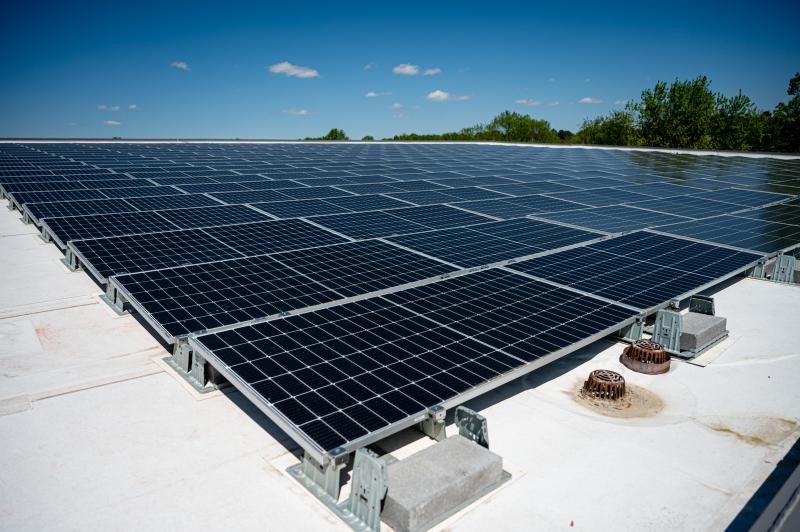
The Spring Hill Rec Center in McLean is now being partly powered by the sun.
The Fairfax County Park Authority announced today (Thursday) that it has turned on a new, 307-kilowatt solar panel array on the roofs of the recreation center’s gym and indoor swimming pool at 1239 Spring Hill Road.
The largest array installed on a park authority facility to date, the solar panels will generate enough energy annually to power 33 homes and reduce the rec center’s electricity needs by 13%, according to the press release.
“Turning the switch at this solar project represents another step in our journey away from fossil fuels and toward a more sustainable future,” John Morrill, director of Fairfax County’s Office of Environmental and Energy Coordination, said. “Not only will this solar array save money in electricity costs over time, it confirms the county’s commitment to meeting the goals in our Operational Energy Strategy.”
Adopted by the Board of Supervisors in July 2021, the county’s Operational Energy Strategy laid out a plan for achieving carbon neutrality — when it absorbs or removes the same amount of carbon emissions as it releases — by 2040. By that year, the county aims to generate 50% of its electricity with renewable sources, among other goals.
The solar panel launch represents a key step forward in a larger push by the FCPA to make the Spring Hill Rec Center more energy efficient. Under construction since July 2023, the project will also install a geothermal HVAC system, replace the pool’s dehumidification units, add LED lights and improve the building’s automation system.
Work on all of the improvements is expected to wrap up this summer.
“We decided, when it was time to make improvements to the rec center, that we would be intentional about installing fixtures and infrastructure that would minimize the impact on our environment, enhance user experience, and save money in the long run,” FCPA Director Jai Cole said. “This is doable, and it’s the right thing to do.”
Other park authority facilities that have undergone similar retrofits include the Cub Run and South Run rec centers.
The county unveiled its first major solar photovoltaic arrays on the Reston and Woodlawn fire stations last September and anticipates completing 12 installations this year in addition to the Spring Hill project.

In Fairfax County, sheep mow lawns, beekeepers remove misplaced swarms and gardeners teach the community.
The Town of Vienna will feature organizations that do all that and more at its annual Green Expo at the Vienna Community Center (120 Cherry Street SE). Sponsored by the town’s Conservation and Sustainability Commission, the expo is set for 7 p.m. to 9 p.m. Thursday, April 18 — four days before Earth Day.
Local company LambMowers, which provides “professional grazing services,” is sponsoring an outdoor exhibit of ewes and lambs, per a press release. Live birds of prey will also be on the scene, courtesy of volunteer organization Secret Garden Birds and Bees.
Other exhibitors at this year’s expo include Fairfax Master Naturalists, Fairfax County’s chapter of the Citizens’ Climate Lobby, multiple garden clubs and an individual who raises chickens at home.
“More than 30 local exhibitors will be on hand with information about green landscaping ideas, composting, recycling, energy efficiency, solar power, water conservation and more,” the town said in its press release.
One expo attendee will walk away with a free home energy audit valued at $595. Home energy audits find cost-effective ways to boost energy efficiency, according to the Energy Star program from the Environmental Protection Agency.
Attendees can also talk to local experts about sustainability, with scheduled “Ask Me Anything” sessions that will cover topics such as recycling infrastructure and native plants.
For example, horticulturist Barbara Ryan will review how residents with yards can incorporate native plants and sustainable practices. Ryan owns the local landscaping company, Chain Bridge Native Landscapes.
After the Green Expo, Fairfax County residents can mark Earth Day on Saturday, April 20 at Earth Day Fairfax, a festival featuring volunteer opportunities, live music, farm animals and more. That event runs from 10 a.m. to 4 p.m. at the Sully Historic Site in Chantilly (3650 Historic Sully Way).
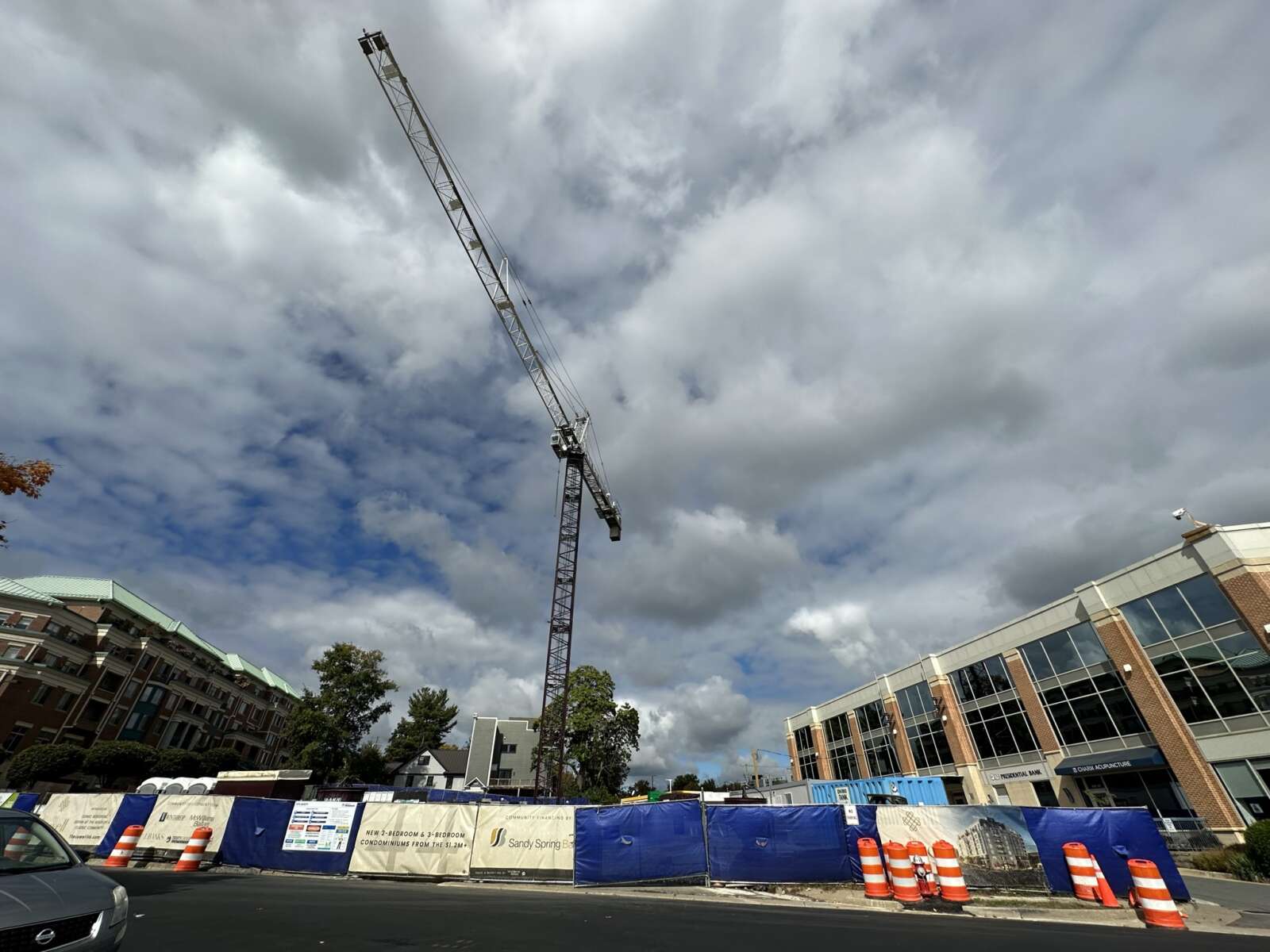
(Updated 4/17) Fairfax County is moving forward with a new ordinance change that would step up the preservation of mature trees, shorelines and wetlands.
The change is part of bringing Fairfax County in line with state revisions to the Chesapeake Bay Preservation Arena Designation and Management Regulations that were adopted by the State Water Control Board.
The Fairfax County website said it will add criteria regarding:
- the preservation of mature trees
- Coastal resilience
- Adaptation to sea level rise and climate change
Getting into the specifics, the new regulations say mature trees can only be removed where necessary and where trees are removed, they must be replanted “to the maximum extent practicable.”
New provisions for climate change require consideration of sea-level rise and storm surge into land development. According to the County website, that means:
- Require Resiliency Assessment for all RPA encroachments as part of WQIA
- Based on assessment, require conditions based on a consideration of the impacts, including the use of best management practices
The resilience assessment is based on projections for the next 30 years to identify the impacts of sea level rise, storm surges and flooding.
“Based on the Resilience Assessment, the county may require conditions, alterations and adaptation measures,” a staff presentation said.
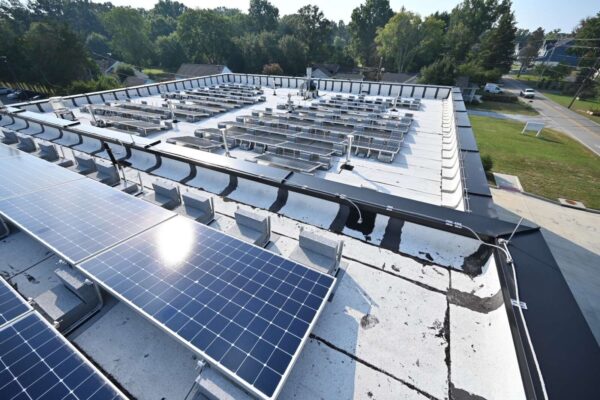
The county’s Department of Public Works and Environmental Services launched a solar panel recycling program last week, expanding upon its November 2022 pilot program.
Daniel Brooks, an environmental services specialist at the county’s Solid Waste Management Program, said this new program falls under their electronic recycling program, which focuses on prevention.
“Many of these devices contain toxic heavy metals,” Brooks said. “We want to keep that out of the waste stream … and going directly to the landfill to prevent groundwater contamination, amongst other things.”
Brooks said in addition to protecting the environment, this program enables people to repurpose and reuse the materials from solar panels. He also said this program is first of its kind in the region.
“[Recycling programs] started with the West Coast and they were years ahead of us, sometimes up to as much as 20 to 30 years in various areas,” Brooks said. “It’s a very growing service as a renewable energy source.”
Since solar panels are relatively new to the area, responsible disposal is too. Brooks said Fairfax County wanted to get ahead of environmental contamination and started the pilot program in November 2022.
According to a 2022 study by the Pew Research Center, 8% of American homeowners said they already installed solar panels within the past year, the majority of which were in the western part of the nation.
The county partnered with PC Recycler, Inc. dba Securis to to refine the recycling process; at the start of the program, 50 solar panels were taken in to figure out the exact process for responsible and reasonable recycling.
“Wanted to figure out the cost metrics, if it was viable to do in-house [recycling], or if we needed to outsource that, and if we outsource that, what measures did we have with those materials?” Brooks said.
Brooks also said this was one step further toward Fairfax County’s sustainability goals, specifically zero waste. He said he’s hoping the county’s work inspires neighboring counties and towns to do the same.
The program is now available to Fairfax County residents only and two drop-off sites are available: the Interstate 66 Transfer Station and the Interstate 95 Landfill.
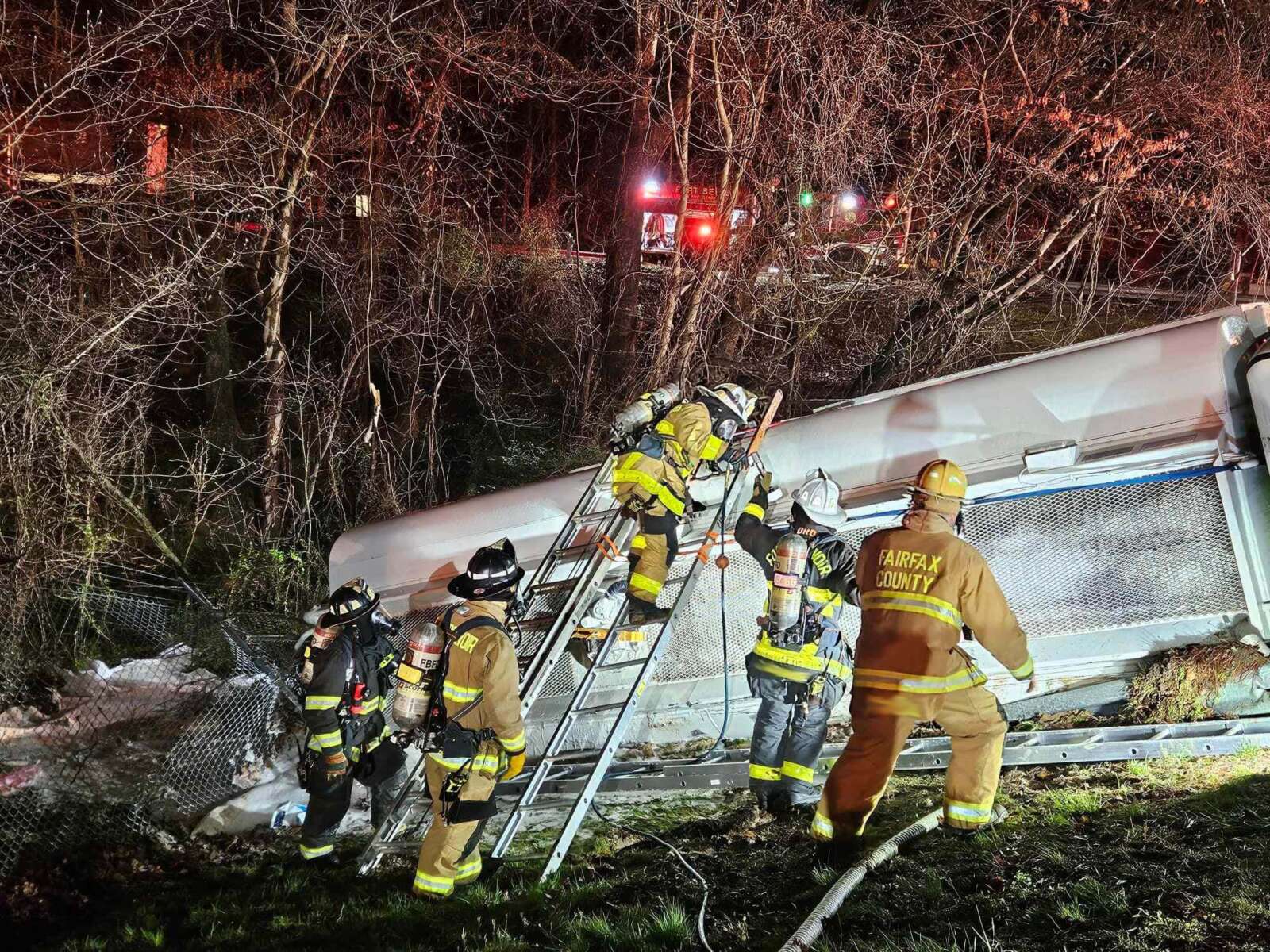
Clean-up efforts are underway at Fort Belvoir after a truck overturned near its airfield yesterday (Wednesday), spilling thousands of gallons of jet fuel and temporarily closing part of Richmond Highway.
Fort Belvoir Fire and Emergency Services and the Fairfax County Fire and Rescue Department were dispatched to the Davison Army Airfield (6954 Britten Drive) around 6:30 p.m. in response to an overturned government fuel truck.
“Approximately 3,000 gallons of JP8, commonly used in aviation equipment, spilled onto the roadway, causing the temporary closure of Richmond Highway,” Fort Belvoir said this morning (Thursday) in a news release.
According to the Army base, first responders and the Fort Belvoir Environmental Division were able to quickly contain the initial spill and start clean-up efforts “to minimize the impact to the surrounding environment.”
Crews remained at the scene into the early hours of this morning, Fort Belvoir Fire and Emergency Services said. No injuries were reported, but the fuel truck driver was taken to a hospital “for further evaluation.”
Fire officials say lingering odors from the spilled fuel don’t pose any threat to people’s health.
The partial closure of Richmond Highway was lifted around 11 p.m., according to a Fort Belvoir spokesperson.
The base says it’s continuing to assess the spill’s environmental impacts and will provide updates on the clean-up and mitigation operations as needed through its social media channels.
“Our top priority is the safety and well-being of our community and the preservation of the environment,” Fort Belvoir said. “Therefore, we are working closely with several environmental agencies to monitor and mitigate the impact of the spill.”
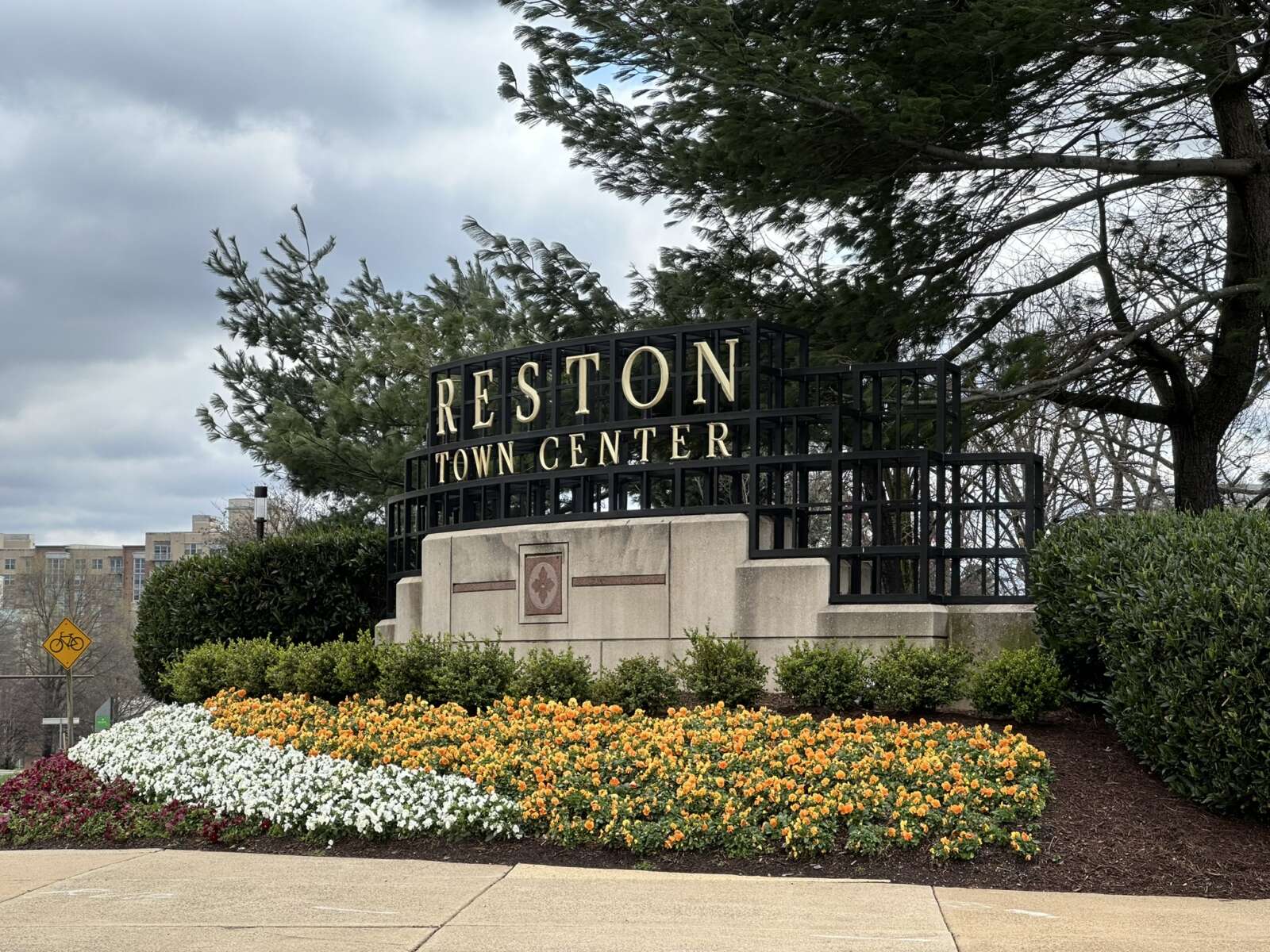
An arts-inspired Earth Day celebration is coming to Reston Town Center.
Organized by the Reston Town Center Association and Tephra Institute of Contemporary Art, the inaugural event on April 20 will feature a variety of activities, including a special art installation at the Mercury Fountain Plaza by Arkansas-based artist Danielle Hatch.
The installation, called “All Is in Motion, Is Growing, Is You,” is inspired by Reston’s origins and founder Bob Simon’s vision of community building.
“Art often serves as a lens to help us understand the world around us, and artists have the unique ability, through their work, to spark conversation around contemporary issues, including the earth, land, and environment,” Tephra ICA Executive Director and Curator Jaynelle Hazard said. “This collaborative event with RTCA presents a special opportunity to celebrate reverence for the natural world and the impact that art and artists can have in shaping sustainability.”
Hatch is expected to build on the installation with a performance during the Tephra ICA Arts Festival, which is scheduled to take place at Reston Town Center in May.
Other festivities include:
- Curator-led tours of the “Pressing” exhibition at Tephra ICA
- An environmentally themed concert with George Mason University professor Victor Provost’s steel pan ensemble
- Afternoon art activations in Reston Town Square Park, such as poetry readings, a meditative sound bath, plant repotting and rehabilitation, printmaking workshops, community composting and face painting
- A free screening of the documentary “Anthropocene: The Human Epoch,” with an introduction and post-film Q&A led by GMU professor Jeremy Campbell
The movie screening is sponsored by and will be held at Reston Town Center’s LOOK Dine-In Cinema (11940 Market Street).
RTCA Executive Director Robert Goudie says the Earth Day celebration aligns with the association’s desire to promote “art experiences that both enrich and educate.”
“We always welcome the chance to partner with Tephra ICA, a content leader in the DMV,” he said in a statement. “With support from Reston Community Center, ArtsFairfax, George Mason University, and LOOK Dine-In Cinemas at Reston Town Center, we think we have something that will capture the imagination and bring forward the importance of this day in a compelling way.”
An opening ceremony is set for 10 a.m. The event is free and open to all.
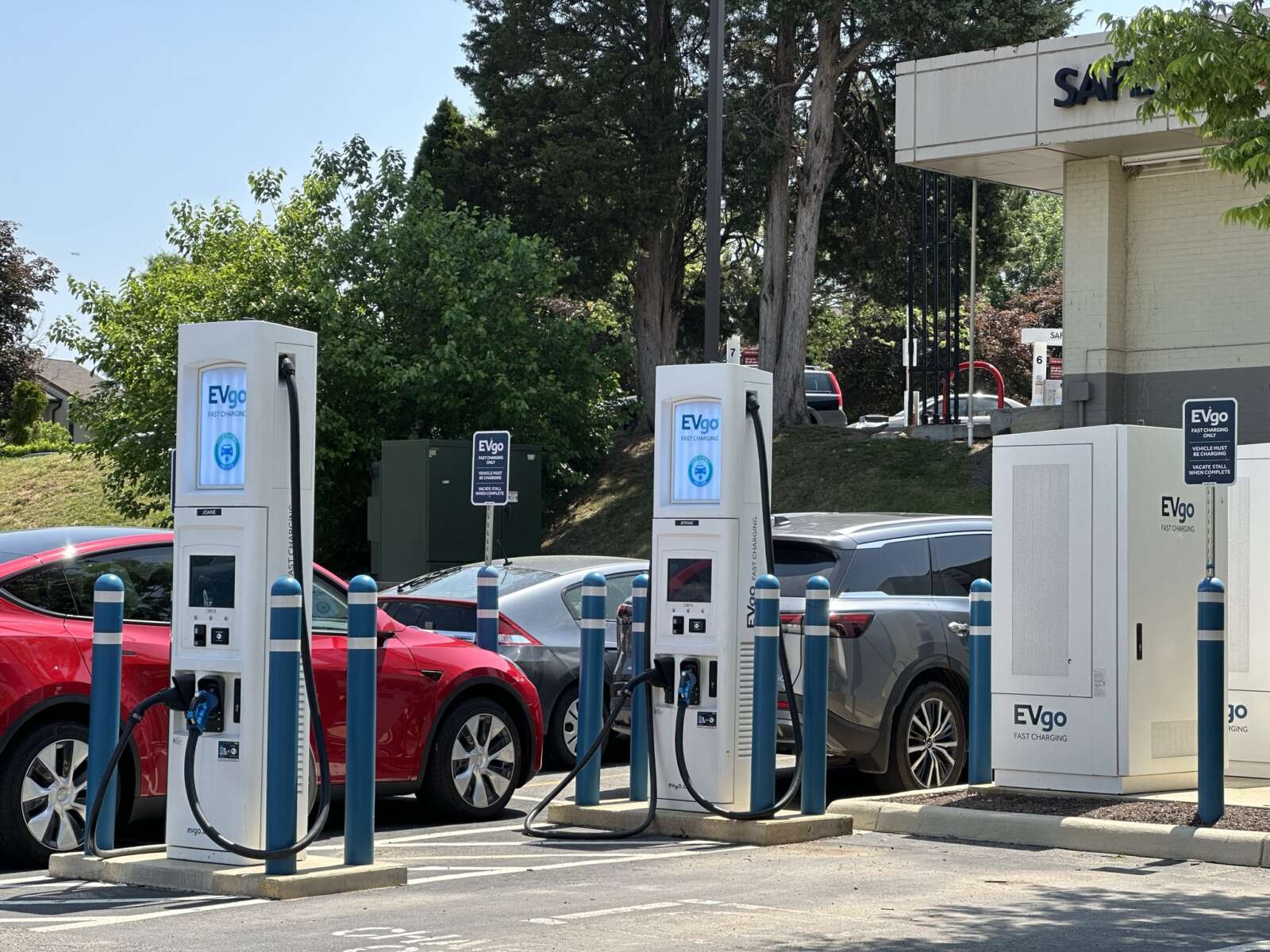
To further its environmental goals, Fairfax County’s to-do list should include building an electric vehicle charging network, addressing “critical” staff shortages, and addressing development pressure, the Environmental Quality Advisory Council (EQAC) says in a new report.
An employee compensation policy update to attract and retain workers in departments such as wastewater and solid waste was the top recommendation in the 2023 Annual Report on the Environment (ARE), EQAC Chair Larry Zaragoza told the Board of Supervisors during its environmental committee meeting on Tuesday (Feb. 29).
“If you had a problem in a facility or in operations that caused some other issues, the consequences could require a lot of corrective action, or they could be publicly undesirable,” he said.
Although it has seen some progress, Zaragoza said the Department of Public Works and Environmental Services (DPWES), in particular, is seeing higher vacancy rates of 16 to 22%. In some “major functions,” rates have climbed as high as 32%, according to the presentation.
Zaragoza acknowledged that the recommendation to develop a network of charging stations for electric vehicles would be challenging to implement, but necessary.
“This seems to be an issue that is challenging the nation with respect to the conversion to EVs,” Zaragoza said. “People have a fear that they won’t have options for charging their vehicles.”
Board of Supervisors Chairman Jeff McKay said that, while it’s true more EV charging stations are needed, the biggest issue is maintenance, speculating that, on a typical day, about 50% of chargers don’t seem to work.
He advised the council to look into ways to address the maintenance issues, including potential legislative measures.
“The EV charging people are racing to get as much federal money as they can to install these and then don’t have anybody to come back and repair them,” McKay said. “And to me, that’s a huge threat to EV utilization because [when] you see them on a map, you expect them to be working.”
Reiterating a recommendation made last year, the report calls for the county to provide more funding for its stormwater program through either one of two options:
- An increase in the Stormwater Service District tax in 2024 by at least one-quarter penny, from 3.25 cents to 3.5 cents per $100 of assessed real estate value
- A change in the base property tax rate
Mason District Supervisor Andres Jimenez asked the council to keep equity and low-income residents in mind when considering these adjustments.
“I would hope that there will be something in place to ensure that the cost increases are equitable and do not disproportionately affect low-income residents,” Jimenez said.
The report also highlights a need to address pressure from development while preserving trees and minimizing ecological degradation.
“As you have development, you often have the loss of trees, you often have loss of habitat, and to the extent that it’s possible, it’s good to try to preserve as much as you can in this process,” Zaragoza said.
McKay agreed with the need to minimize environmental damage but said the council should also carefully consider how that priority intersects with the “oldest parts of the county that are in desperate need of revitalization.”
According to the report, proposed topics that the EQAC will review this year include the impacts of data centers, flood risks, and water security.
County staff have been developing guidelines for regulating noise, water pollution, power usage and other issues raised by data centers. In a new ARE recommendation, EQAC suggests that the county collect energy consumption data on its current and planned data centers, including the extent to which they utilize green energy.
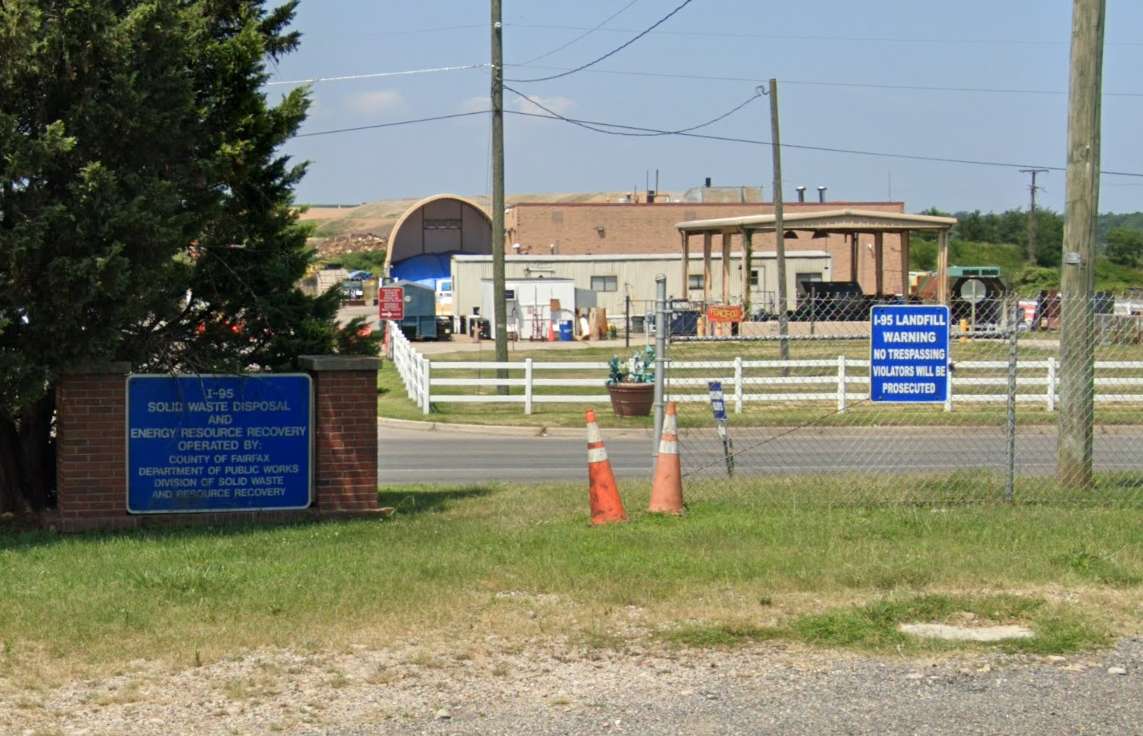
(Updated at 5:05 p.m. on 2/29/2024) Fairfax County’s supervisors believe that grassland birds deserve a safe nesting ground, even if it’s atop a former landfill.
The Board of Supervisors directed county staff on Feb. 20 to work with the Virginia Department of Environmental Quality (DEQ) and the Audubon Society of Northern Virginia to identify areas within the I-95 Landfill Complex (9850 Furnace Road) in Lorton where mowing can be minimized to protect grassland birds during their nesting season.
Though the facility still provides waste disposal services, most of the landfill closed around the late 1980s to early 1990s, according to Mount Vernon District Supervisor Dan Storck’s office.
Since then, the site has become a habitat for 100 species of grassland birds, including grasshopper sparrows, eastern meadowlarks, bobolinks and American kestrels.
“These are all birds of concern because of declining grassland habitats,” Greg Butcher, the former director of bird conservation for the Audubon Society of Northern Virginia, told FFXnow in an email.
The Fairfax County Department of Public Works and Environmental Services (DPWES) currently has an agreement with the Audubon Society to permit bird monitoring at the landfill.
Recently, the environmental organization reached out to the board, urging the county to consider restrictions on mowing during the nesting season, from April 1 to mid-July, due to its potential to destroy nests and eggs and harm fledglings and adult birds.
However, since federal and state regulations require mowing for post-closure maintenance of the landfill, DPWES and the Audubon Society must collaborate with DEQ to devise a strategy that both preserves nesting birds and ensures access to the landfill cover and gas wells, while also maintaining proper drainage.
Representatives from DPWES and the Audubon Society are set to start discussions soon and aim to formulate a plan in the upcoming weeks, DPWES Deputy Director Eric Forbes told FFXnow in an email.
“We are anticipating about a month for the development and coordination of the pilot plan to try to be ready for this season’s bird nesting,” he said. “The pilot plan would include a map showing no mow areas, access pathways to our landfill infrastructure (gas wells and stormwater conveyance), and a schedule for mowing in non-peak nesting season.”
For its part, the Audubon Society plans to send volunteers to map the locations of the birds and their potential nesting areas, Butcher says. But he noted the organization doesn’t know yet how big the “no-mow” area will need to be.
It’s also unclear how much the project will cost, but the board asked staff to provide an estimate in a report.
The county’s future plans for the now-closed parts of the I-95 landfill include a solar panel array and a potential indoor skiing facility from the Tysons-based company Alpine-X.
In addition, a public park with trails, an amphitheater and other amenities is being developed on the former Lorton Landfill across the street at 10001 Furnace Road. Owned by Furnace Associates, Inc., the private landfill stopped accepting construction and demolition debris in 2018 and completed the closure process in 2021.
Correction: This story originally conflated the I-95 Landfill Complex with the privately owned Lorton Landfill. It has been updated to clarify that the two sites are different. Image via Google Maps
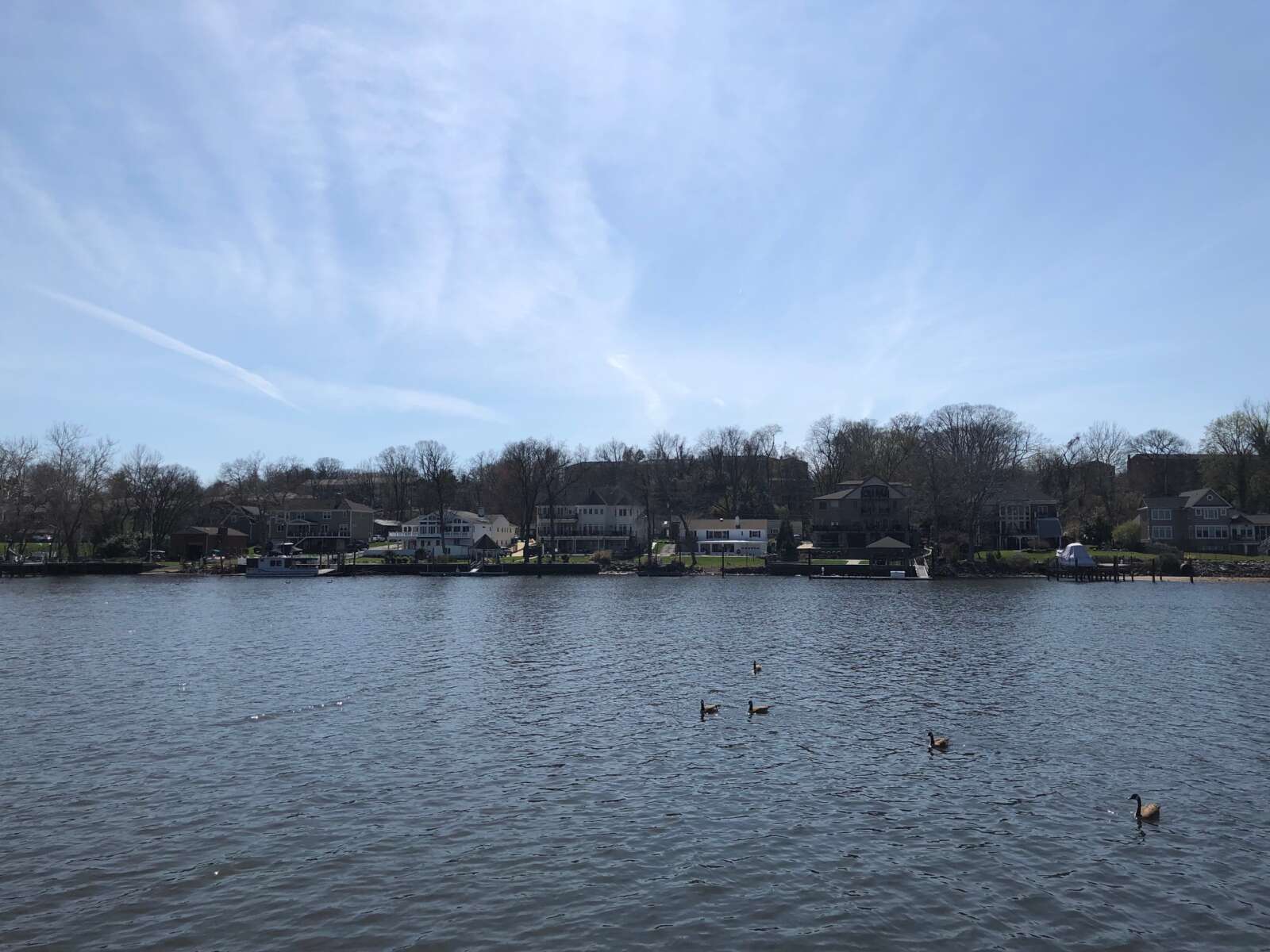
A committee in the Virginia House of Delegates on Friday advanced to the House floor a bill that would require localities to conduct water studies prior to approving data centers.
The bill, introduced by Del. Josh Thomas, a freshman Democrat who represents western Prince William County in the 21st District, would encourage local governments undergo site assessment to examine the effect of data centers on water usage, carbon emissions and agricultural resources.
Groups in Northern Virginia have long called for water studies to be conducted at the sites of proposed data centers, which use large amounts of liquid to cool the thousands of computers found within.
Data centers’ impact on local water sources was most notably questioned prior to the recent approval of the PW Digital Gateway tech corridor when the Fairfax County Water Authority sent a letter to Prince William County officials in 2022 asking that one be performed. To the dismay of anti-data center activists and environmental advocates, the county never performed a comprehensive study of the potential impacts on water quality in the Occoquan Reservoir from the Digital Gateway.
“This vote is a wake-up call to the data center industry,” Thomas said in a statement. The citizens of the Commonwealth, especially those in western Prince William County, have demanded more transparency in the data center siting process, and this bill is a critical first step. HB338 will encourage localities to analyze the impact of data centers on the community before projects are approved – not after.”
He continued, “While these centers can be an important source of tax revenue for localities, we cannot allow unrestrained development to harm our communities. I’m pleased to see that the General Assembly is weighing in on the issue of data center development. My colleagues and I will continue to push this legislation all the way to the Governor’s desk.”
The House Counties, Cities, and Towns Committee on Friday sent the bill to the House floor for a vote. Should the House approve the legislation, the Virginia Senate and Republican Gov. Glenn Youngkin must also sign off for it to become law.
Del. Ian Lovejoy, a Republican member of the committee who represents western Prince William, voted in favor of reporting the bill to the House floor.
“As co-patron of HB338 I was happy to see it move forward,” Lovejoy said in a text message. “As we await the outcome of the data center [study], any incremental gain in adding reasonable accountability to the data center siting process in a win.”
Democratic Sen. Danica Roem, a data center critic who also represents western Prince William and is a patron of the bill, also called the legislation a “win” and a step toward encouraging “local governments to complete work on application reviews prior to voting.”
Roem continued, “My hope is that this will lead our new Board of County Supervisors and staff to work collaboratively together to serve the best interests of Prince William County residents. This is the first step on the road to reform.”
Other Northern Virginia Democrats who are patrons of the bill championed its advancement to the House floor.
“The most important thing about sustainable development is to listen to our communities, and this bill makes progress in ensuring that big businesses listen to our communities as they develop technologies for the 21st century,” Democratic Del. Dan Helmer of Fairfax said in a news release from Thomas’ office. “We’re proud to be working with leaders at the local, state, and federal level to protect our climate and ensure our communities are heard.”
Del. Kannan Srinivasan, a Loudoun County Democrat, underscored the importance of evaluating the environmental impacts of data centers. “I am excited to support my fellow classmate as a Chief Co-Patron on his bill,” Srinivasan said in the news release.
This article was written by FFXnow’s news partner InsideNoVa.com and republished with permission. Sign up for InsideNoVa.com’s free email subscription today.
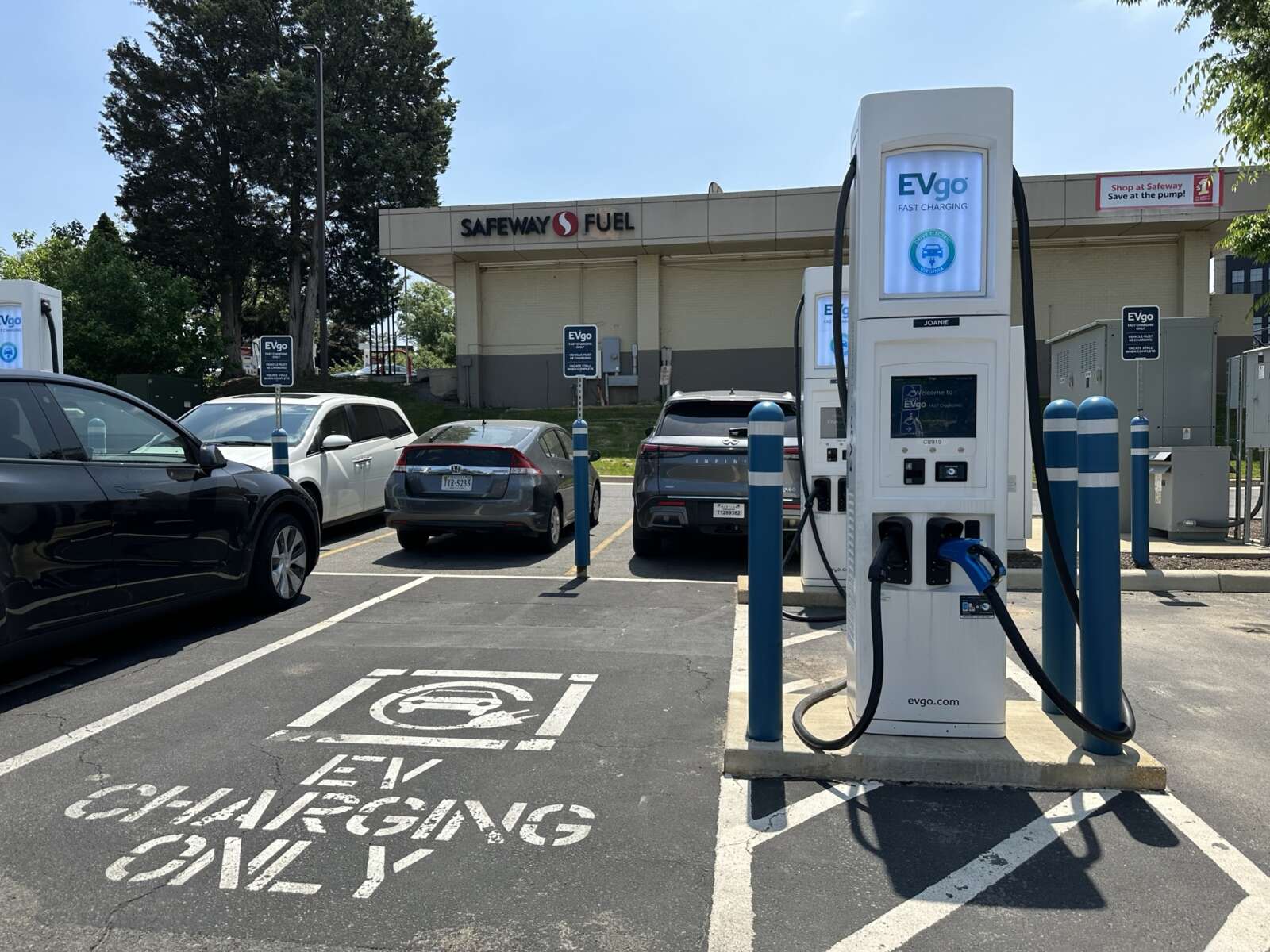
Fairfax County may continue waiving permitting and installation fees for electric vehicle chargers, following an initial trial period of 18 months that showed mixed results.
At a land use policy committee meeting on Tuesday (Jan. 30), Fairfax County Board of Supervisors Chairman Jeff McKay said he hopes to extend the trial period by one year.
Despite losing revenue from the waived fees, the county should find ways to reduce barriers for EVs, particularly since there are already many existing barriers, McKay argued.
“From a value statement standpoint, being able to say that we do not charge [for] permits to encourage people to adopt EVs, I think, should be our standard,” he said.
It was unclear how much eliminating the fees incentivized installation of EV charging equipment — if at all, county staff said in a presentation. Between October 2022 and October 2023, fees for 38 commercial permits and 858 residential permits were waived.
The Dranesville and Sully districts had the most residential permits issued, while the Providence District led the way when it came to commercial permits. The 38 commercial permits issued during the waiver period represented an increase from 19 permits in 2021, 11 in 2020 and just one in 2019.
The data doesn’t include the number of chargers installed through each permit.
John Friedman, an engineer in the county’s Department of Land Development Services (LDS), said it’s difficult to directly correlate the fee waiver with EV utilization.
“We had hoped to be able to collect enough information to determine whether or not having a zero permit fee actually incentivizes installation. We weren’t able to do that because you don’t actually know why people are doing things,” Friedman said, adding that staff were surprised by the relatively high number of residential permits.
The county missed out on $125,000 in revenue over the trial period — a loss that Friedman was concerned likely needs to be offset by increases in other LDS fees.
“The big issue for us is the lost revenue,” Friedman said.
Braddock District Supervisor James Walkinshaw said the societal benefits of EV further the county’s equity goals.
“Everybody benefits if even an affluent person decides to move forward with an EV,” Walkinshaw said.
McKay hopes to file a board matter for consideration at the board’s May meeting, giving county staff time to continue evaluating the impact of the fee waiver on utilization. The current fee waiver pilot program will end on May 1.

